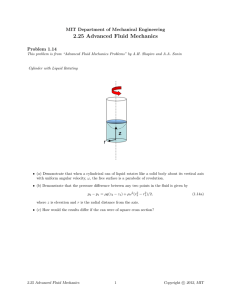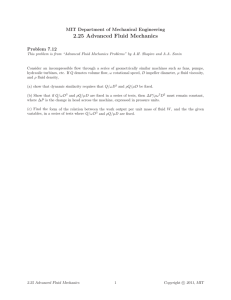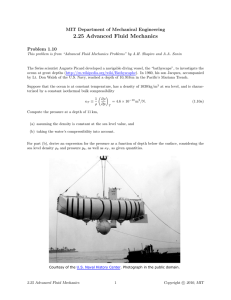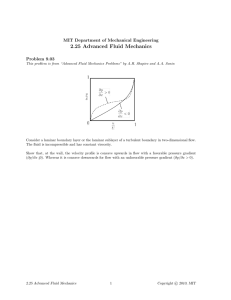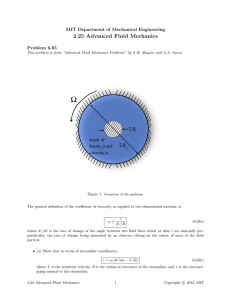2.25 Advanced Fluid Mechanics Problem 1.14 This
advertisement
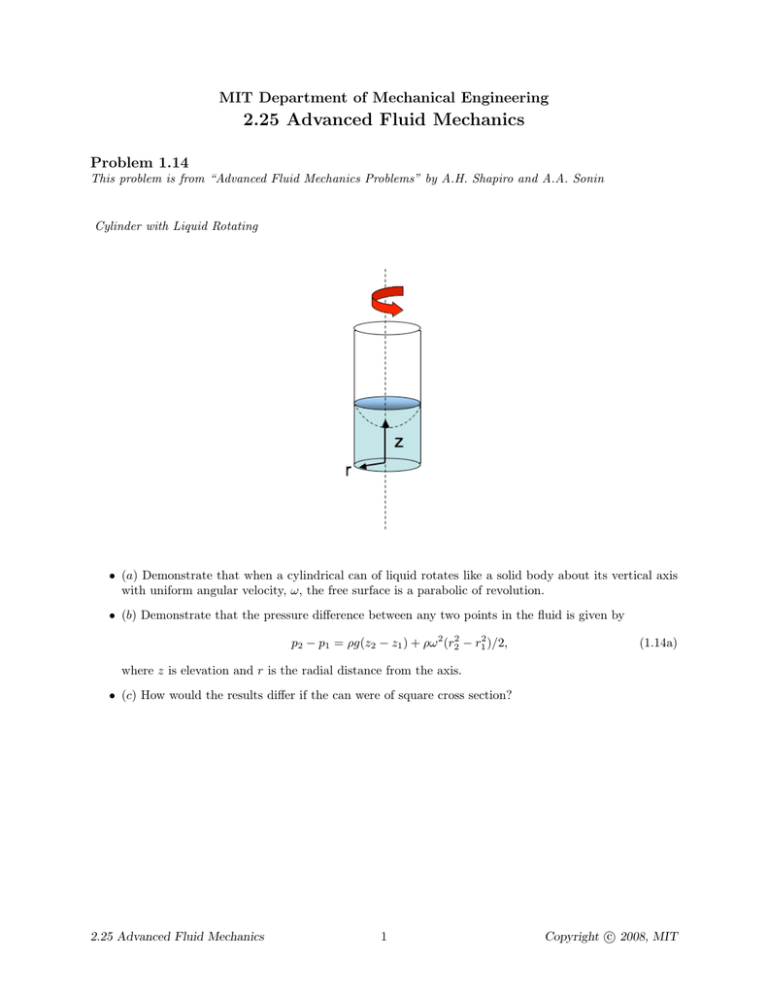
MIT Department of Mechanical Engineering 2.25 Advanced Fluid Mechanics Problem 1.14 This problem is from “Advanced Fluid Mechanics Problems” by A.H. Shapiro and A.A. Sonin Cylinder with Liquid Rotating • (a) Demonstrate that when a cylindrical can of liquid rotates like a solid body about its vertical axis with uniform angular velocity, ω, the free surface is a parabolic of revolution. • (b) Demonstrate that the pressure difference between any two points in the fluid is given by p2 − p1 = ρg(z2 − z1 ) + ρω 2 (r22 − r12 )/2, (1.14a) where z is elevation and r is the radial distance from the axis. • (c) How would the results differ if the can were of square cross section? 2.25 Advanced Fluid Mechanics 1 c 2008, MIT Copyright © Fluid Statics A.H. Shapiro and A.A. Sonin 1.14 Solution: • (a) If the fluid rotates like a solid body, then ar = then, for the fluid and now, considering gravity, At the surface,Δ p = 0, then ∂ps ∂rs δrs + ∂ps ∂zs δzs Vθ2 = ω 2 r, r (1.14b) ∂p = ρω 2 r, ∂r (1.14c) ∂p = −ρg. ∂z (1.14d) = 0, or ρω 2 rs δrs − ρgδz s = 0, then ω 2 rs δrs = gδz s , ⇒ ω 2 rs δrs = gδz s , ⇒ zs = ω 2 rs2 + Const, 2g (1.14e) then the surface is a revolution paraboloid. • (b) Now, let’s integrate the radial derivative and differentiate with respect to the axial coordinate to compare the equations, ∂p ∂p ∂f r2 = , = ρω 2 r, ⇒ p(r, z) = ρω 2 + f (z), ⇒ ∂z ∂z ∂r 2 Now, comparing both expressions for ∂p ∂z, we notice that ρg = p(z, r) = ρω 2 ∂f ∂z , (1.14f) then f = −ρgz + Const. Finally, r2 − ρgz + Const, 2 (1.14g) then, for two different points inside the liquid, p(z2 , r2 ) − p(z1 , r1 ) = ρω 2 ( r22 r2 − 1 ) − ρg(z2 − z1 ), 2 2 (1.14h) • (c) No practical difference, the surface just would be cut by two planes instead of a cylinder (the effects of surface tension would be different, but this is unimportant as long as the surface tension contribution is small). D Problem Solution by MC, Fall 2008 2.25 Advanced Fluid Mechanics 2 c 2008, MIT Copyright © MIT OpenCourseWare http://ocw.mit.edu 2.25 Advanced Fluid Mechanics Fall 2013 For information about citing these materials or our Terms of Use, visit: http://ocw.mit.edu/terms.
